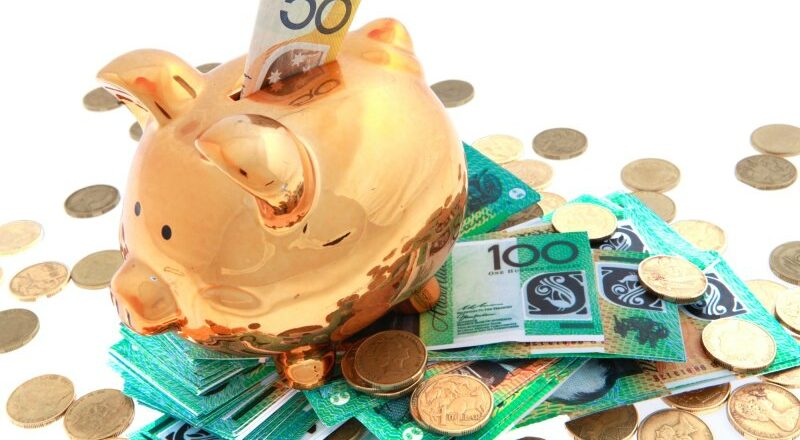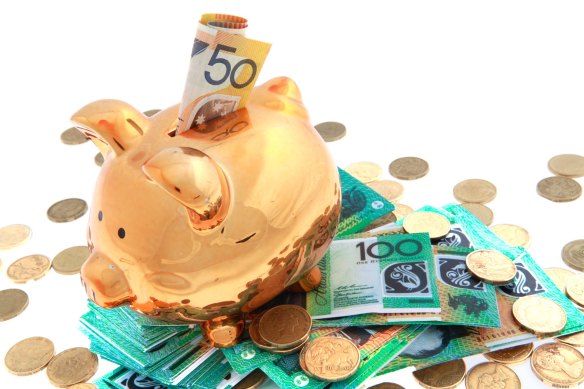$1000 left for emergencies? How to beat the savings crisis
Save articles for later
Add articles to your saved list and come back to them any time.
Lately, my Saturdays have become more busy than usual.
My husband and I join throngs of people hunting for a new home. As I strike up conversation with my fellow home-hunters, I hear first-hand what I’ve been reading in the news for months.
Many are moving because a huge rise in their rent has left them scrambling for a new place.
Many people don’t realise that saving money is a skill.Credit: Jim Rice
When I ask about their previous rent, I am no longer surprised to hear their rent has surged by almost 50 per cent in just the past few years.
What did alarm me though, was that according to the Australian Housing and Urban Research Institute, 52 per cent of renters and 28 per cent of home owners (aged 25 to 34) have less than $1000 in savings.
When asked how long they could survive on their own, or their live-in partner’s, savings if they lost their main source of income, 41 per cent of renters and 30 per cent of home owners said two weeks or less.
These statistics seem to be a natural extension of the current economic climate, with high inflation, a cost of living crisis, and skyrocketing rent.
But while these statistics are alarming, they’re eerily familiar.
It’s clear that some people were struggling to save money even before the instability of the past few years.
In 2021, ME Bank reported that one-fifth of households had less than $1000 in savings. Before COVID-19, a survey by Budget Direct Insurance in 2019 found that more than 45 per cent of participants couldn’t afford to cover a $1000 emergency. Again, in 2018, ME Bank reported that about a quarter of Australian households had less than $1000 in cash savings.
This problem isn’t a new one. It’s been around for a while.
Now, I’m not saying it hasn’t been a tough ride. The past few years have been tough for a lot of people. Lockdowns, mass redundancies, high inflation. It’s been non-stop drama.
But can we blame it all on the current economic climate? Shouldn’t we dig a little deeper?
Having talked to lots of people about their personal finances, it’s clear that some were struggling to save money even before the instability of the past few years.
In fact, as far back as they can remember, their finances have felt overwhelming, chaotic, and out of control. They can’t remember a time when saving money felt easy, because it never was.
In other words, for many, the struggle to save existed before current conditions. And if you’re struggling to save money in a good economy, it won’t get easier in a rough one.
So if economic conditions aren’t causing this savings crisis, what is?
Many people don’t realise that saving money is a skill. Like cooking or driving, it’s something you learn how to do. This idea is supported by the research.
Recent research published in the Journal of Family and Economic Issues found that subjective financial knowledge, financial confidence and savings account ownership were significant predictors of having an emergency fund.
It noted prior studies which found a strong positive correlation between savings knowledge and savings behaviour, including one that found that individuals who were exposed to financial education in high school were more likely to save as adults.
In short, there’s a good chance the entire problem isn’t the economy, or your salary, or the cost of living. At least part of the problem could be that you’ve never been taught how to save.
This is fantastic news because it’s a fixable problem. (Certainly easier than trying to fix inflation, the rental crisis or the property market).
So, if you’ve always struggled to save money, where do you start?
Know the flow
First, you need to understand your current “flow” of money. How much is coming in, how much goes out, and where does it go? You can’t stop the bleeding if you don’t know where you’re bleeding from.
Print out 30 to 60 days’ worth of bank and credit card statements, and categorise all your expenses into 15 to 20 categories. You’ll quickly see with clarity where all your money has gone.
Get set up
If you don’t already have one, get a savings account. Start with a minimum of two accounts: a daily transaction account (for bill payments), and a savings account (for putting money aside).
Start small
If you aren’t in the practice of saving consistently, start small. If you’ve never consistently saved $20 a month, don’t suddenly try to hit $100. Start with an amount you can put away and feel confident that you won’t need to touch. This could be as small as $5 or $10.
The key to initial success is not “how much” you save, but how consistently you can save without dipping into your savings. Saving $10 for six months without touching it is better than saving $50 one month, spending it the next, and repeating the cycle.
Paridhi Jain is the founder of SkilledSmart, which helps adults learn to manage, save and invest their money through financial education courses and classes.
- Advice given in this article is general in nature and is not intended to influence readers’ decisions about investing or financial products. They should always seek their own professional advice that takes into account their own personal circumstances before making any financial decisions.
For expert tips on how to save, invest and make the most of your money, delivered to your inbox every Sunday, sign up for our Real Money newsletter here.
Most Viewed in Business
From our partners
Source: Read Full Article


